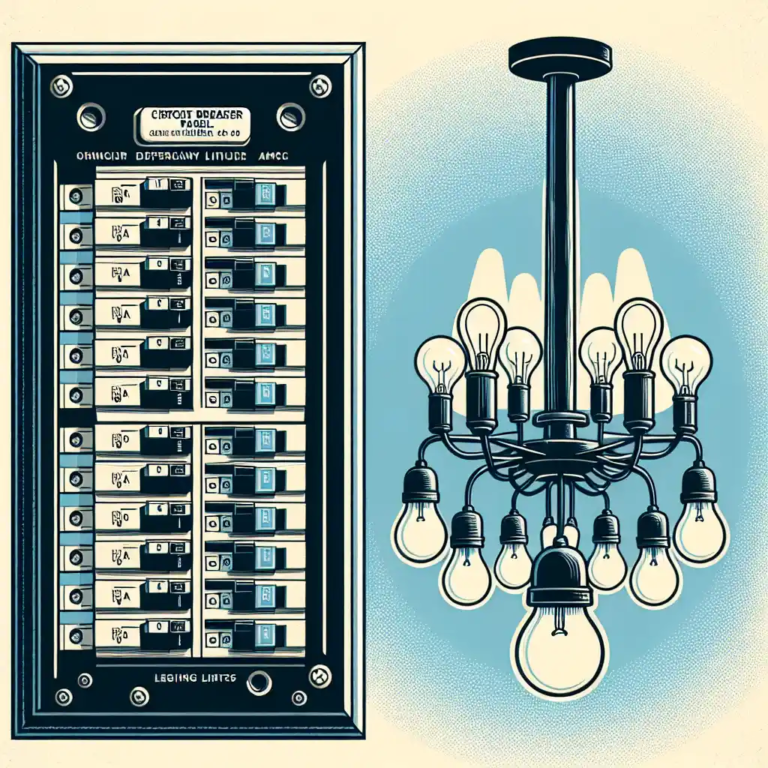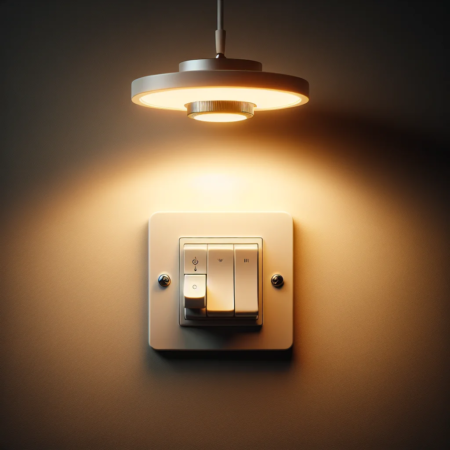Check out this Youtube video: If you’re looking to learn about how many ceiling lights can be on one circuit, this video titled “How many lights can you put on one 15 amp or 20 amp breaker” is a must-watch!

Contents
Understanding Electrical Load Limits
Understanding electrical load limits is crucial for ensuring the safe and efficient operation of electrical systems. Electrical load limits refer to the maximum electrical demand that a circuit can handle without overheating or tripping the breaker. It is important to calculate and adhere to these limits to prevent circuit overloads, which can lead to safety hazards such as fires and equipment damage. Adhering to load limits also promotes energy efficiency and prolongs the lifespan of electrical equipment.
Definition of electrical load limits
In electrical engineering, electrical load limits refer to the maximum electrical demand that a circuit can handle without overheating or tripping the breaker. It is crucial to accurately calculate the load limits for circuits to ensure they can safely accommodate the connected devices and appliances.
Electrical load limits are determined by factors such as the gauge of the wiring, the amperage of the circuit breaker, and the wattage of the connected devices. Exceeding these limits can lead to circuit overloads, creating serious safety hazards such as electrical fires and equipment damage.
It is essential for individuals to understand the electrical load limits of their circuits to prevent overloading and ensure the safe and efficient operation of their electrical systems.
Importance of adhering to load limits
Adhering to electrical load limits is of utmost importance to prevent circuit overloads, which can pose significant risks to both property and personal safety. By staying within the prescribed load limits, individuals can avoid overheating of wiring and components, minimize the risk of electrical fires, and prolong the lifespan of their electrical equipment.
Furthermore, adhering to load limits promotes energy efficiency as it ensures that electrical systems operate within their optimal capacity. This can result in lower energy consumption, reduced utility costs, and decreased environmental impact.
Understanding and adhering to electrical load limits is critical for maintaining a safe and efficient electrical system, preventing hazards, and promoting energy efficiency.
How Many Ceiling Lights Can Be on One Circuit?
When determining the number of ceiling lights that can be on one circuit, several factors need to be considered to ensure safety and compliance with electrical codes. Factors to consider include the wattage of the lights, the circuit’s amperage, and any other loads on the circuit.
Factors to consider
-
Wattage of the Lights: Begin by determining the total wattage of the ceiling lights that will be connected to the circuit. This entails adding up the wattage of each individual light fixture that will be on the circuit.
-
Circuit Amperage: It is essential to know the amperage rating of the circuit that will be supplying power to the ceiling lights. Common amperages for residential circuits are 15 or 20 amps.
-
Other Loads: Take into account any other electrical loads connected to the circuit, such as outlets or other light fixtures. The total load on the circuit should not exceed the circuit’s amperage rating, including the ceiling lights.
-
National Electrical Code (NEC): Refer to the NEC guidelines for the specific requirements and restrictions regarding the number of lights permitted on a single circuit. Compliance with NEC standards is crucial for electrical safety and code adherence.
Calculation of load limits
To ensure that the ceiling lights do not overload the circuit, the calculation of load limits is necessary. This involves determining the total wattage of the lights and comparing it to the circuit’s amperage.
-
Total Wattage Calculation: Add up the wattage of all the ceiling lights that will be on the circuit. For example, if each light fixture is rated at 60 watts and there will be 10 fixtures, the total wattage would be 600 watts.
-
Ampere Rating Consideration: Based on the circuit’s amperage rating, which could be 15 or 20 amps, calculate the maximum load limit. For a 15-amp circuit, the maximum load is 1800 watts (15 amps x 120 volts), and for a 20-amp circuit, it is 2400 watts (20 amps x 120 volts).
-
Comparison & Compliance: Compare the total wattage of the ceiling lights to the maximum load limit for the circuit. Ensure that the total wattage does not exceed the maximum load limit to comply with electrical codes and safety standards.
When determining the number of ceiling lights that can be on one circuit, it is vital to carefully consider the wattage of the lights, the circuit’s amperage, and any other electrical loads on the circuit. By calculating the load limits and ensuring compliance with electrical codes, it is possible to determine the appropriate number of ceiling lights for a single circuit.
Example of Load Limit Calculation
When calculating the load limit for ceiling lights, it’s essential to assess the electrical capacity to ensure safety and efficiency. The primary calculation revolves around understanding the wattage and the number of lights that can be accommodated on a single circuit without overloading it.
Step-by-Step Calculation Process:
-
Determine Circuit Capacity: Begin by identifying the circuit’s amperage rating, commonly 15 or 20 amps in residential settings.
-
Calculate Wattage: Next, ascertain the wattage of each ceiling light. To do this, multiply the bulb wattage by the total number of bulbs within the lighting fixture. For instance, if each bulb is 60 watts and there are five bulbs, the total wattage is 300 watts (60W x 5).
-
Assess Amps: With the total wattage at hand, use the formula W = V x A to determine the number of amps the lights will draw. Based on the standard voltage of 120 volts, divide the total wattage by the voltage (W/V). In the example with 300 watts, the calculation would be 300W/120V = 2.5A.
-
Consider Circuit Load: Considering a typical 15-amp circuit, the National Electrical Code recommends a maximum of 80% capacity usage. For a 15-amp circuit, this equates to 12 amps.
-
Final Calculation: Compare the amp calculation from step 3 with the circuit’s capacity figured in step 4. If the calculated amps are less than the circuit rating, the load limit can accommodate the specified number of ceiling lights. If it exceeds the maximum capacity, adjustments such as redistributing the lights to other circuits or consulting an electrician may be necessary.
Calculating load limits for ceiling lights involves a comprehensive assessment of wattage, amperage, and circuit capacity. By following these steps, individuals can ensure the safe and efficient operation of their lighting installations while avoiding potential circuit overloads.
Adhering to electrical load limits for ceiling lights
When it comes to adhering to electrical load limits for ceiling lights, it is vital to ensure safety and compliance with the capacity of the circuit. Overloading a circuit with an excessive number of ceiling lights can lead to electrical hazards such as overheating, circuit breaker tripping, and even potential fires.
Adhering to the proper guidelines for the number of ceiling lights on one circuit is essential for maintaining a safe and efficient electrical system within a property.
To determine the optimal number of ceiling lights that can be safely installed on one circuit, it is crucial to consider the wattage of each light fixture and the maximum load capacity of the circuit. Calculating the total wattage of the ceiling lights and comparing it to the circuit’s capacity will provide a clear understanding of whether the circuit can accommodate the intended lighting installation without overburdening the electrical system.
It’s important to consult with a licensed electrician to ensure that the selected circuit can adequately support the planned number of ceiling lights. Additionally, adhering to local building codes and regulations regarding electrical load limits for ceiling lights is paramount for maintaining compliance and safety within a property.
Furthermore, investing in energy-efficient LED ceiling lights can be a strategic approach to minimizing the electrical load on a circuit while still achieving adequate illumination. LED lights consume less power compared to traditional incandescent or halogen lights, thereby reducing the overall strain on the circuit and promoting energy efficiency.
When considering the installation of ceiling lights, adhering to electrical load limits is a critical aspect of ensuring the safety and functionality of the lighting system. By evaluating the wattage, consulting with professionals, and prioritizing energy-efficient solutions, it is possible to achieve an optimal balance between lighting requirements and electrical load capacity within a property.





